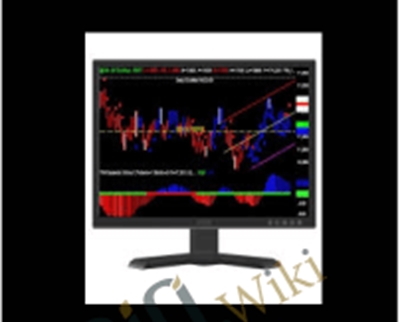Buy Biblical Hebrew-Learning a Sacred Language – Michael Carasik Course at GBesy. We actively participate in Groupbuys and are committed to sharing knowledge with a wider audience. Rest assured, the quality of our courses matches that of the original sale page. If you prefer, you can also buy directly from the sale page at the full price (the SALEPAGE link is directly provided in the post).
Salepage link: At HERE. Archive:
$99 $26 – Biblical Hebrew-Learning a Sacred Language – Michael Carasik
Professor Michael Carasik has designed these 36 episodes as your authoritative primer on everything from the Hebrew alphabet and punctuation marks to essential vocabulary and advanced grammatical rules. Whether you’re just starting out on a study of Hebrew or you already know the basics, these lectures are a helpful resource that include line-by-line readings of passages from the Hebrew Bible. .
1. Studying Biblical Hebrew
This video is currently unavailable
Use the word “hallelujah” as a gateway to exploring the three different components of the Biblical Hebrew writing system: letters, vowels, and diacriticals. Then, start learning Hebrew the natural way with a look at Genesis 1:3 and the first thing…
2. Learning the Aleph Bet
This video is currently unavailable
Get to know the letters of the Hebrew alphabet, and how Biblical Hebrew is pronounced. Surprises include the silent letter aleph (the first letter of “God”), the tricky letter samekh, which resembles an “o” but sounds like an “s,” and nearly identica…
3. The Tiberian Vowel System
This video is currently unavailable
The Tiberian system of marking vowels in Hebrew has been used exclusively for more than 1,000 years. In this episode, discover the signs that mark short and long vowels, and learn how vowels can change their spelling (and, slightly, their…
4. Roots of Semitic Verbs
This video is currently unavailable
Every Hebrew verb, and almost every noun and adjective, is based on a root, a group of three (or sometimes two) consonants. Here, Professor Carasik teaches you how to begin recognizing the roots of verbs in Biblical Hebrew, then he…
5. Hebrew Verb Forms and the Definite Article
This video is currently unavailable
Get an introduction to the five different Hebrew verb forms: finite, infinitive, adjective, participle, and imperative. Plus, learn three ways of identifying something as definite (rather than indefinite): by using the definite article (ha), by labeling..
6. Hebrew’s Attached Prepositions
This video is currently unavailable
Explore three Hebrew letters that attach to the beginning of other words to create a new word. Then, armed with this new knowledge, read your first complete paragraph in Biblical Hebrew from start to finish: the story of the first day of creatio…
7. Adjective Forms and Agreement in Hebrew
This video is currently unavailable
Unlike English, Hebrew adjectives have four forms (not one), and they must agree with their nouns based on whether they’re singular or plural, and masculine or feminine. Learn the four forms of adjectives (tov, tovah, tovim, tovot), several…
8. Irregular Hebrew Nouns and Adjectives
This video is currently unavailable
Sometimes it’s the simpler nouns that are the most likely to surprise you. Examine several of the most common non-obvious nouns (irregular nouns) and adjectives (demonstratives) in Biblical Hebrew. These include family names (daughter..
9. Hebrew Pronouns and Pronominal Suffixes
This video is currently unavailable
Hebrew has a ton of different pronouns. In this episode, get an introduction to pronouns like T (ani, anokhi) and “we” (anahnu), as well as three different flavors of pronominal suffixes. Then, practice your new skills with a Bible verse…
10. How Hebrew Letters Behave
This video is currently unavailable
What do different letters do differently? Here, take a comprehensive look at the different ways Hebrew letters behave and start deciphering words in Biblical Hebrew that you don’t already recognize. Topics include guttural letters (the orneriest…
11. Perfect and Imperfect Hebrew Verbs
This video is currently unavailable
Focus on two of the five forms of Biblical Hebrew verbs: the perfect and the imperfect, both of which have person, gender, and number. The perfect, as you’ll learn, is always marked by endings. The imperfect, however, is marked by prefix letters ..
12. Segholate Nouns and Pausal Forms
This video is currently unavailable
Turn now to segholate nouns: nouns that feature seghols (“-eh” vowels). By looking at segholate nouns in real Hebrew phrases from the Bible, you’ll start to get more comfortable with what Professor Carasik calls the “EH-eh rhythm” and the..
13. The Construct Form: Hebrew’s Trailer Hitch
This video is currently unavailable
By allowing you to attach another noun to your first noun, the construct form acts as a sort of trailer hitch in Biblical Hebrew. Once attached, the first noun in construct “belongs” to the second. Here, learn construct forms by revisiting the…
14. Forming Hebrew Construct Chains
This video is currently unavailable
Continue your study of construct forms with prepositions in Biblical Hebrew that are combinations of simple prepositions you’ve already learned (example: lifnei, or “before”). Then, look at irregular nouns with unusual construct forms whose…
15. Hebrew Verb Classifications: Binyanim
This video is currently unavailable
In Biblical Hebrew, the binyan acts as a sort of stem or conjugation for verbs. Get a re-introduction to verbs with their binyan identification, learn how the binyanim got their names, and focus on a single root in different binyanim to get a fe…
16. Question Words in Hebrew
This video is currently unavailable
From mi (“Who?”) and lama lo (“Why not?”) to eikh (“How?”) and matai (“When?”), discover how to recognize the words that tell you when a question is coming up in Biblical Hebrew. Why is this so important? Because there’s no such thing as a…
17. Hebrew Participles
This video is currently unavailable
Return to the verbal system with Professor Carasik’s helpful explanation of the third of the five Hebrew verb forms: the participle. One of the ways you’ll master the verbal adjective in Biblical Hebrew is by working your way through Genesis…
18. Counting in Hebrew
This video is currently unavailable
In this fun episode, start to count in Hebrew, from one to 10,000. You’ll learn a children’s rhyme for counting from one to four, the construct form of numbers, the ordinal numbers, some helpful shortcuts such as how to refer to a “pair” of…
19. Hebrew Roots with Guttural Letters
This video is currently unavailable
Focus your attention here on categories of verbs from the Qal binyan with roots whose guttural letters (hey, het, and ayin) tend to “misbehave.” Central to this episode are three rules about how gutturals behave, as well as relevant examples in…
20. Hebrew’s Lamed-Hey Roots
This video is currently unavailable
Lamed-hey roots are those roots where, in the dictionary, the third radical of a verb (the lamed) is a hey. Here, learn how to work with some of the most common lamed-hey roots, including banah (“build”), hayah (“live”), anah (“answer”), panah…
21. Hebrew’s Roots Beginning with Yud
This video is currently unavailable
Roots that begin with yud are plentiful in Hebrew, and very common. Professor Carasik walks you through a list of some of the most common first-yud verbs, including yada (“know”), yatza (“go out”), yarash (“take possession”), and yashav (“settle”).
22. Irregular Hebrew Verbs
This video is currently unavailable
Very few verbs in Hebrew are irregular. Those that are, as you’ll learn here, are not very difficult, but they do work a little differently than what you’re used to seeing. In this episode, learn how to master irregular Hebrew verbs by focusing on…
23. Hebrew’s Hollow Verbs
This video is currently unavailable
Welcome to what may be the strangest verb roots of all: those that have only two consonants, not three. Here, explore the general rules about these hollow verbs, and build a list of commonly used hollow verbs you can refer to when reading…
24. The Infinitive in Hebrew
This video is currently unavailable
The infinitive verb form is used to describe the action of a verb (as in “There’s a time to rend … and a time to mend.”). Professor Carasik walks you through the different infinitive forms, then guides you through Ecclesiastes 3: what he calls t…
25. Jussives, Cohortatives, and “Hava Nagila”
This video is currently unavailable
Explore how Biblical Hebrew expresses intention (as in phrases like yehi or, or “Let there be light.”). You’ll encounter jussives, which are only found in lamed-hey, hollow, and Hiphil verbs; and cohortatives, which invite collective action (as in the…
26. The Imperative Form in Hebrew
This video is currently unavailable
Turn now to the imperative form in Hebrew and the simplest way to think of it (in the Qal): by taking off the tav prefix from second-person imperfect verbs. You’ll learn imperatives from a variety of weak and strong verbs, and use your skills to wo…
27. Verbs of the Hiphil Binyan
This video is currently unavailable
Focus on a new binyan: Hiphil, which can be thought of as the causative binyan. (One example: I’haqtir, or “to burn incense.”) Then, go back to Genesis, collect a list of Hiphil infinitives, and see what the different root categories do when…
28. Piel Verbs and Passive Binyanim
This video is currently unavailable
Take a closer look at another major binyan: the Piel. The goal of this episode is to give you the skills to distinguish this binyan when you need to, so you can learn the verbs as they come along. Then, examine two more binyanim: the passives…
29. Reflexive Binyanim: Niphal and Hitpa’el
This video is currently unavailable
Conclude your survey of the seven different binyanim by taking a closer look at two reflexive patterns: the Niphal and the Hitpa’el. Along the way, Professor Carasik introduces you to an important root that appears only in these two binyanim:…
30. Reading the Bible in Hebrew: Joshua 1
This video is currently unavailable
Now you’re ready to start reading longer passages in the Bible in Hebrew. Here, follow Professor Carasik as you read Joshua 1:1-9, which deals with God’s charge to Joshua. You’ll translate the text, talk about the passage’s meaning, and spend tim…
31. Geminate Verbs and Reading Numbers 22
This video is currently unavailable
In this episode, explore geminates: roots where radicals two and three are the same. Along the way, you’ll learn how to spot these common two-letter combinations, consider a fascinating example from Ezekiel’s vision of the messianic future…
32. Hebrew’s Object Suffixes
This video is currently unavailable
You’ve seen object suffixes in previous lectures. Now, focus on them directly. You’ll learn some obvious (and not-so-obvious) combinations of verbs and object suffixes, and ponder some questions about phrases and sentences in the Bible that app…
33. Hebrew Oaths and Other Idioms
This video is currently unavailable
Study idioms that are common in Biblical Hebrew, but sound strange when translated into English. You’ll explore different ways to take an oath in Biblical Hebrew, the customary way to state someone’s age, and the danger of “crossing the mout.
34. Understanding Hebrew Punctuation Marks
This video is currently unavailable
In the Hebrew Bible, every word has a punctuation mark that serves three functions: telling you where the accent falls, indicating how to chant the text musically, and telling you how to group words in a sensible way. Use this knowledge to…
35. Choosing a Hebrew Bible
This video is currently unavailable
What’s the best Bible from which to read Hebrew? Professor Carasik offers insights and recommendations on four printed Bibles as well as several electronic sources, and shows you how to navigate your way to a specific chapter and verse in an..
36. Helpful Hebrew Reference Books
This video is currently unavailable
Look at some essential Hebrew reference books out there (besides biblical translations and commentaries), including reference grammars and three major Biblical Hebrew dictionaries. Close out the show by completing your line-by-line…
$99 $26 – Biblical Hebrew-Learning a Sacred Language – Michael Carasik
Buy the Biblical Hebrew-Learning a Sacred Language – Michael Carasik course at the best price at GBesy.. After your purchase, you will get access to the downloads page. You can download all the files associated in your order at here and we will also send a download notification email via your mail.
Unlock your full potential with Biblical Hebrew-Learning a Sacred Language – Michael Carasik courses. our courses are designed to help you excel.
Why wait? Take the first step towards greatness by purchasing Biblical Hebrew-Learning a Sacred Language – Michael Carasik courses today. We offer a seamless and secure purchasing experience, ensuring your peace of mind. With our trusted payment gateways, Stripe and PayPal, you can confidently complete your transaction knowing that your financial information is protected.
Stripe, known for its robust security measures, provides a safe and reliable payment process. With its encrypted technology, your sensitive data remains confidential throughout the transaction. Rest assured that your purchase is protected.
PayPal, a globally recognized payment platform, offers an additional layer of security. With its buyer protection program, you can feel confident in your purchase. PayPal ensures that your financial details are safeguarded, allowing you to focus on your learning journey.
Is it secure? to Use of?
- Your identity is completely confidential. We do not share your information with anyone. So it is absolutely safe to buy the Biblical Hebrew-Learning a Sacred Language – Michael Carasik course.
- 100% Safe Checkout Privateness coverage
- Communication and encryption of sensitive knowledge
- All card numbers are encrypted using AES at relaxation-256 and transmitting card numbers runs in a separate internet hosting atmosphere, and doesn’t share or save any data.
How can this course be delivered?
- After your successful payment this “Biblical Hebrew-Learning a Sacred Language – Michael Carasik course”, Most of the products will come to you immediately. But for some products were posted for offer. Please wait for our response, it might take a few hours due to the time zone difference.
- If this happens, please wait. The technical department will process the link shortly after. You will receive notifications directly by e-mail. We appreciate your wait.
What Shipping Methods Are Available?
- You will receive a download link in the invoice or YOUR ACCOUNT.
- The course link always exists. use your account to login and download the Biblical Hebrew-Learning a Sacred Language – Michael Carasik course whenever you need.
- You only need to visit a single link, and you can get all the Biblical Hebrew-Learning a Sacred Language – Michael Carasik course content at once.
- You can do your learning online. You can be downloaded for better results and can study anywhere on any device. Make sure your system does not sleep during the download.
How Do I Track Order?
- We always notice the status of your order immediately after your payment. After 7 days if there is no download link, the system will automatically complete your money.
- We love to hear from you. Please don’t hesitate to email us with any comments, questions and suggestions.
![GBesy [GB] GBesy [GB]](https://www.gbesy.com/wp-content/uploads/2023/05/gbesy-Logo-full-100.png)



 Purchase this course you will earn
Purchase this course you will earn 




Reviews
There are no reviews yet.